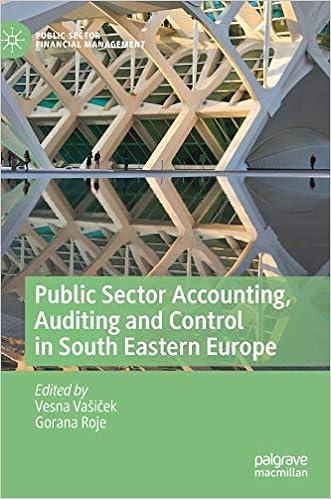Re-solve the earned value example from the lecture by recomputing the tables in slides 27 and 28, this time using the 0-100% rule (the example used the 50-50% rule). Recall that the problem data was given in slide 25. This means that you need to provide tables showing
(a) planned value for each activity for each day through the end of the project, with total and cumulative total planned value [slide 27]; and
(b) earned value and actual costs for each activity for each day through day 7, with cumulative EV and cumulative AC. Finally,
(c) compare the earned value you computed with the earned value in the lecture example, and briefly explain why they are different. [This question comes from MM 8e Ch10 P11]
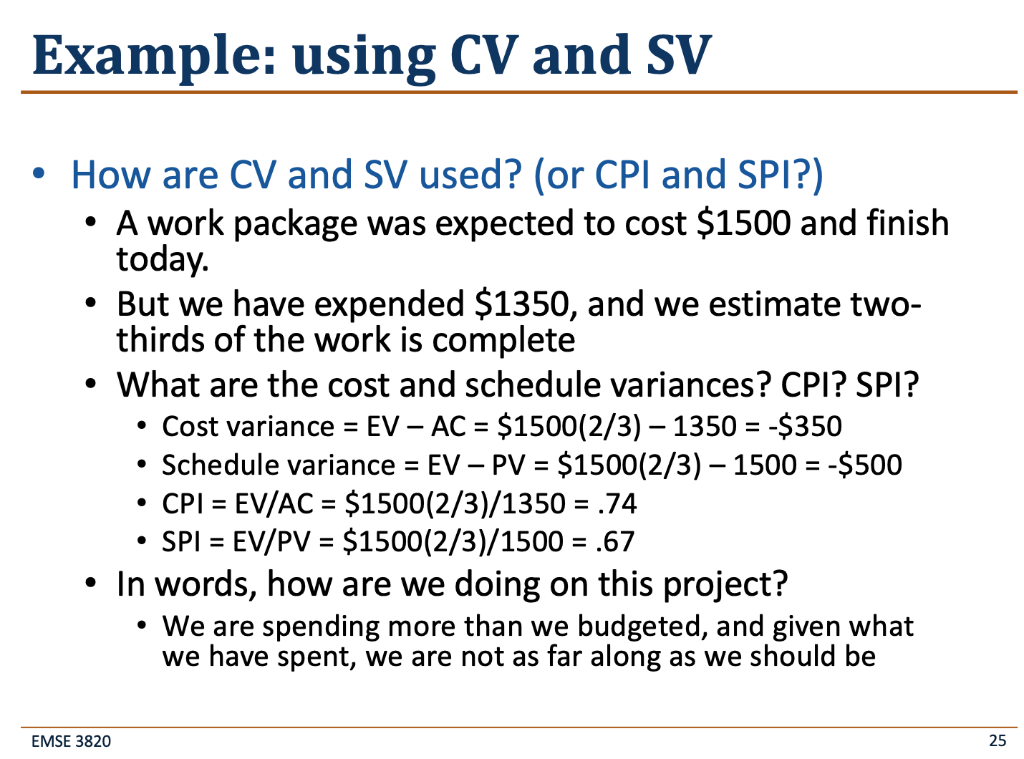
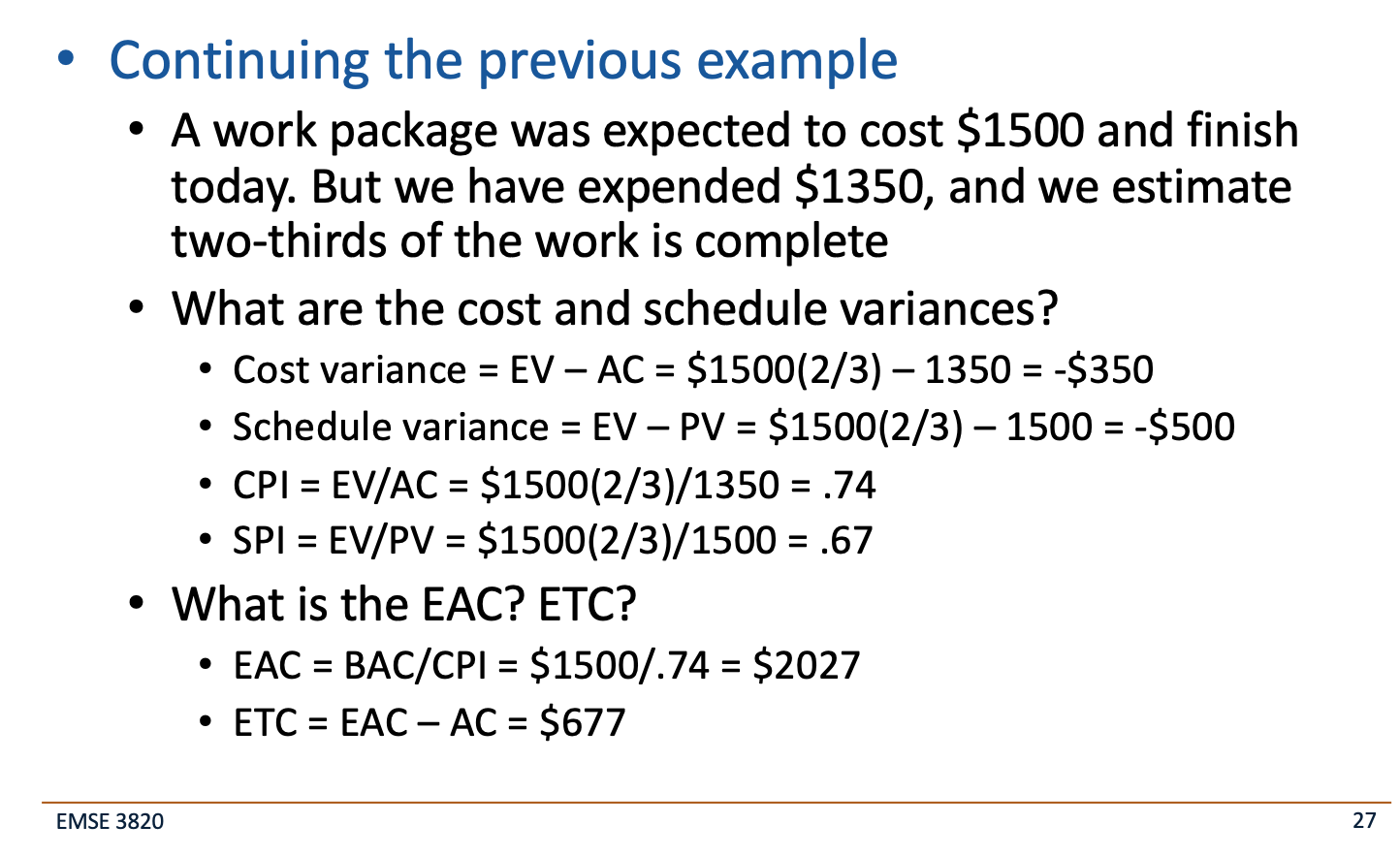
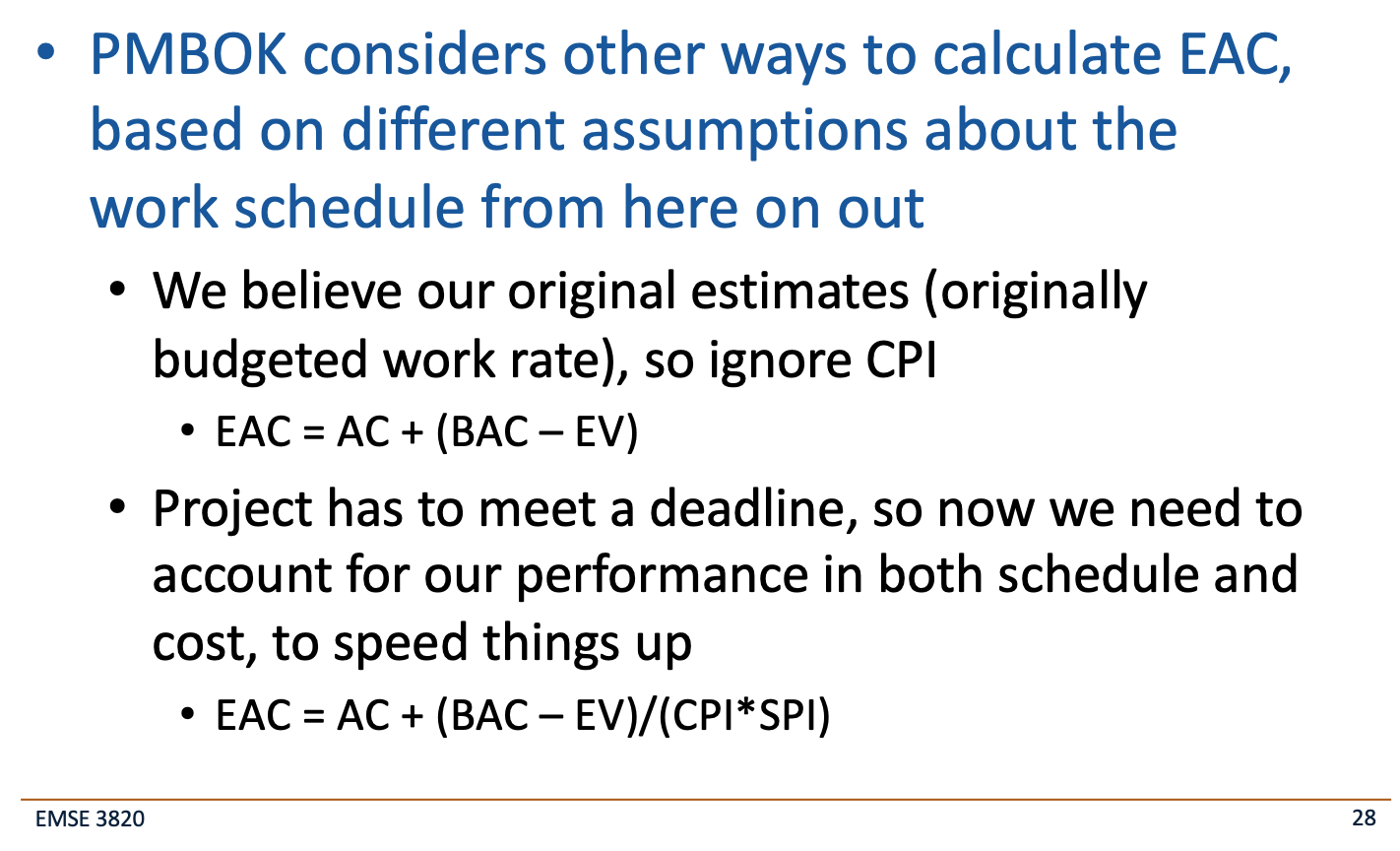
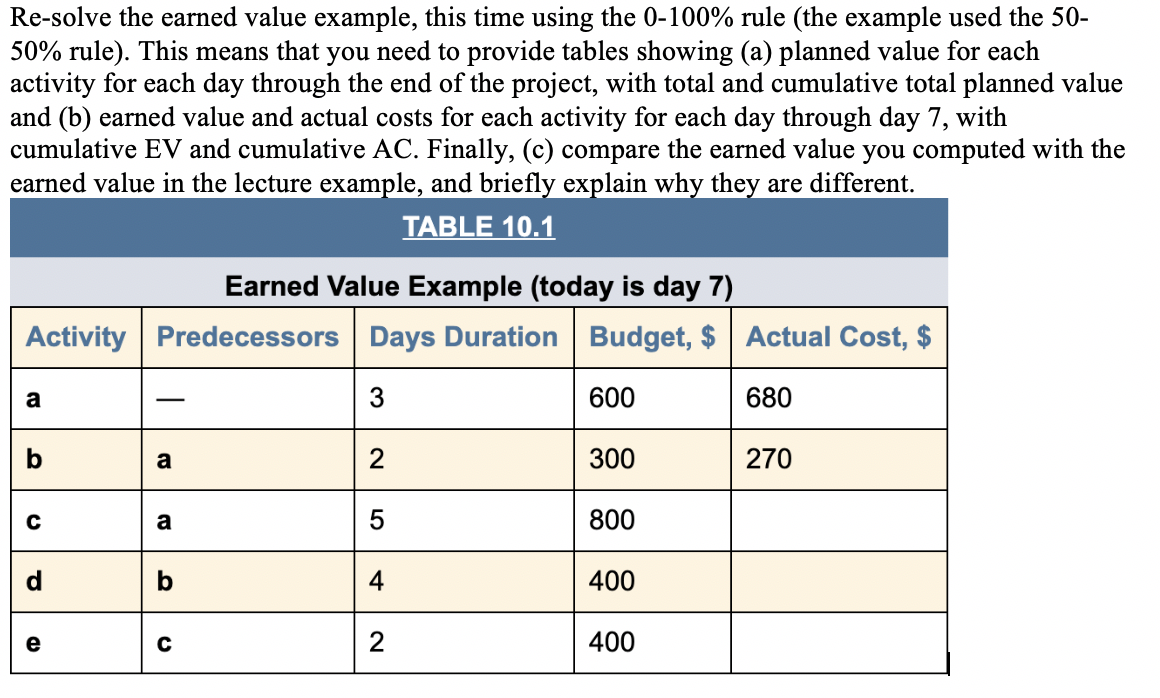
Example: using CV and SV How are CV and SV used? (or CPI and SPI?) A work package was expected to cost $1500 and finish today. But we have expended $1350, and we estimate two- thirds of the work is complete What are the cost and schedule variances? CPI? SPI? Cost variance = EV AC = $1500(2/3) - 1350 = -$350 Schedule variance = EV PV = $1500(2/3) 1500 = -$500 CPI = EV/AC = $1500(2/3)/1350 = .74 SPI = EV/PV = $1500(2/3)/1500 = .67 In words, how are we doing on this project? We are spending more than we budgeted, and given what we have spent, we are not as far along as we should be EMSE 3820 25 Continuing the previous example A work package was expected to cost $1500 and finish today. But we have expended $1350, and we estimate two-thirds of the work is complete What are the cost and schedule variances? Cost variance = EV AC = $1500(2/3) - 1350 = -$350 Schedule variance = EV PV = $1500(2/3) - 1500 = -$500 CPI = EV/AC = $1500(2/3)/1350 = .74 SPI = EV/PV = $1500(2/3)/1500 = .67 What is the EAC? ETC? EAC = BAC/CPI = $1500/.74 = $2027 ETC = EAC AC = $677 EMSE 3820 27 PMBOK considers other ways to calculate EAC, based on different assumptions about the work schedule from here on out We believe our original estimates (originally budgeted work rate), so ignore CPI EAC = AC + (BAC EV) Project has to meet a deadline, so now we need to account for our performance in both schedule and cost, to speed things up EAC = AC + (BAC - EV)/(CPI*SPI) EMSE 3820 Re-solve the earned value example, this time using the 0-100% rule (the example used the 50- 50% rule). This means that you need to provide tables showing (a) planned value for each activity for each day through the end of the project, with total and cumulative total planned value and (b) earned value and actual costs for each activity for each day through day 7, with cumulative EV and cumulative AC. Finally, (c) compare the earned value you computed with the earned value in the lecture example, and briefly explain why they are different. TABLE 10.1 Earned Value Example (today is day 7) Activity Predecessors Days Duration Budget, $ Actual Cost, $ 600 680 300 270 800 400 400 Example: using CV and SV How are CV and SV used? (or CPI and SPI?) A work package was expected to cost $1500 and finish today. But we have expended $1350, and we estimate two- thirds of the work is complete What are the cost and schedule variances? CPI? SPI? Cost variance = EV AC = $1500(2/3) - 1350 = -$350 Schedule variance = EV PV = $1500(2/3) 1500 = -$500 CPI = EV/AC = $1500(2/3)/1350 = .74 SPI = EV/PV = $1500(2/3)/1500 = .67 In words, how are we doing on this project? We are spending more than we budgeted, and given what we have spent, we are not as far along as we should be EMSE 3820 25 Continuing the previous example A work package was expected to cost $1500 and finish today. But we have expended $1350, and we estimate two-thirds of the work is complete What are the cost and schedule variances? Cost variance = EV AC = $1500(2/3) - 1350 = -$350 Schedule variance = EV PV = $1500(2/3) - 1500 = -$500 CPI = EV/AC = $1500(2/3)/1350 = .74 SPI = EV/PV = $1500(2/3)/1500 = .67 What is the EAC? ETC? EAC = BAC/CPI = $1500/.74 = $2027 ETC = EAC AC = $677 EMSE 3820 27 PMBOK considers other ways to calculate EAC, based on different assumptions about the work schedule from here on out We believe our original estimates (originally budgeted work rate), so ignore CPI EAC = AC + (BAC EV) Project has to meet a deadline, so now we need to account for our performance in both schedule and cost, to speed things up EAC = AC + (BAC - EV)/(CPI*SPI) EMSE 3820 Re-solve the earned value example, this time using the 0-100% rule (the example used the 50- 50% rule). This means that you need to provide tables showing (a) planned value for each activity for each day through the end of the project, with total and cumulative total planned value and (b) earned value and actual costs for each activity for each day through day 7, with cumulative EV and cumulative AC. Finally, (c) compare the earned value you computed with the earned value in the lecture example, and briefly explain why they are different. TABLE 10.1 Earned Value Example (today is day 7) Activity Predecessors Days Duration Budget, $ Actual Cost, $ 600 680 300 270 800 400 400










